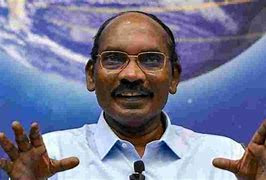.Chandrayaan-3's first orbit has changed, now orbiting 42,000 km . from Earth
ISRO modified Chandrayaan-3's first orbit on July 15, 2023 at 12:05 pm. That is, its long distance has been increased. Chandrayaan-3 was put into orbit 179X36,500 km yesterday. Today, its long distance has been increased to 42,000 km
.ISRO has successfully completed the first in-orbit maneuver of Chandrayaan-3. In other words, its first layer has been modified. Now it moves in an elliptical orbit around the earth with an orbit of more than 42 thousand.
Currently, ISRO scientists are analyzing data about its orbit. After launch, Chandrayaan-3 was put into an elliptical orbit with a perigee point of 179 km and a maximum point of 36,500 km. i.e. short distance perigee. long-distance climax. Apogee is increased during the first orbital maneuver. That means 36,500 km to 42,000 km. There will be an orbital maneuver around the earth five times.
.Means the class will be changed. In it, Apogee has four meaning when Chandrayaan will leave Earth. This class will be modified. i.e. first, third, fourth and fifth. Now you have to wonder where the second layer went.
Indeed, in the second orbit, not the climax but the perigee will be changed. That is, the close distance will be increased. What will the ride before Chandrayaan-3 be like? On July 31, 2023, Chandrayaan-3 will leave the earth ten times. ISRO scientists will continue to increase the distance by changing the apogee.
Means fixed long distance solar orbit for the moon. The propulsion module will separate from the lander on August 17. After traveling through these long orbits for five days, that is, from August 5 to 6, Chandrayaan-3 will enter the phase passage into lunar orbit. Then Chandrayaan-3's propulsion system will be activated.
For this, this deboosting must be done. This means its speed must be reduced. This work will be completed by August 23. This is where the breath of ISRO scientists will stop. Because that will be the most difficult task. The landing process will start from here. The area of the landing area has been increased, this time the strength of Vikram Lander's four legs has been increased.
New sensor installed. A new solar panel has been installed. Last time, the Chandrayaan-2 landing area was selected as 500 meters X 500 meters. ISRO wants to land Vikram Lander in the middle. Hence there are some limitations. This time, the landing area is kept the same size as 4 km x 2.5 km. That is, Vikram Lander from Chandrayaan-3 can land in such a large area.







0 Comments